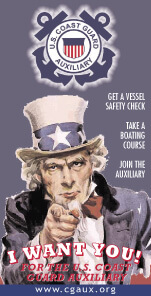|
SAN FRANCISCO, Calif. – Early spring snowmelt has prompted a warning from Pacific Gas and Electric Company (PG&E) and the California Department of Boating and Waterways (DBW). Those planning outings near mountain streams, rivers, and reservoirs should take precautions against swift, cold water flows.
Some of PG&E’s reservoirs and lakes are already nearing spill stage due to recent warm air temperatures melting snowpacks earlier than usual. When reservoirs top, large amounts of icy, swift spill water can create hazards.
“Recreationists in mountain rivers and reservoirs need to be extra vigilant of water conditions and take appropriate safety measures,” said Jack Purkis, director of PG&E’s power generation. “The flows will fluctuate with the warming and cooling of the day.”
“Snowmelt and resulting swift and cold river flows can create treacherous conditions for all recreationists – waders, swimmers, paddlers, boaters, anglers and even hikers cooling off at the water’s edge,” said Raynor Tsuneyoshi, director of the DBW. “Stay safe by wearing a life jacket, avoiding alcohol and being aware of the current.”
Rafters, kayakers, and canoeists should beware of fast river flows and cold water, and should exercise extreme caution by checking local conditions before undertaking their trip.
Here are some safety tips:
Know the Water
· Sudden immersion in ice-cold water can stimulate the “gasp reflex” causing an involuntary inhalation of air or water. It can even trigger cardiac arrest, temporary paralysis, hypothermia and drowning. When combined with swift water, even the strongest swimmers may be easily overwhelmed.
· Cold water entering the ear canal can cause vertigo and disorientation. This may confuse swimmers, causing them to venture deeper into the water.
· Kayakers and canoeists also need to be prepared for swift, cold water.
· Lakes and ponds are very attractive on warm spring days but also cold. Use caution and common sense with young children playing near water.
Know your limits
· Swimming in open water is more difficult than in a swimming pool – people tire more quickly and can get into trouble.
· Cold water causes impairment leading to fatalities. Cold water reduces body heat 25-30 times faster than air does at the same temperature.
· Many unseen obstacles can be lurking below the waters surface. Swift water can make these obstacles even more treacherous.
Wear a life jacket
· Conditions change quickly in open water and even the best swimmers can misjudge the water and their skills when boating or swimming.. Wearing a life jacket can increase survival time.
Dinghy Digest ®
|
If you would like advertising information on either the web site or the print version please contact advertising@azbw.com


















































